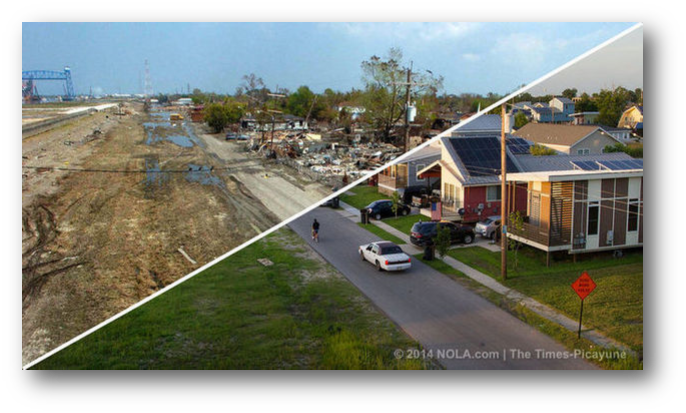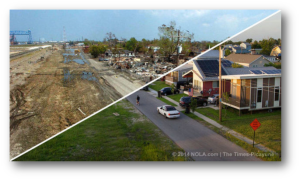On August 29th, 2005 four-fifths of New Orleans had been submerged by Hurricane Katrina. The population was stranded at the Superdome, a congregation of the desperate and poor or trying to signal for help on their rooftops. Katrina became symbolic of American dysfunction and government neglect. 10 years later and nobody can truly say that city has been returned to its original state.
Katrina took the lives of over 1800 citizens of New Orleans, and while the Hurricane itself caused countless amounts of damage, the government’s response was considered inadequate by many thus adding to the damage. The federal government had been preparing for a disaster in New Orleans since 2002 when the possibility of a Hurricane was announced, and several days before Katrina hit the FEMA encouraged evacuation of the city, an announcement that became mandatory the day before Katrina hit. Although, many were unable to leave so the FEMA opened the Superdome where citizens were allowed to stay during the storm. Although, within a few days the dome became packed with over 20,000 people and had to be evacuated. The FEMA halted all firefighters and ambulances from responding without the permission of state authorities first ultimately slowing the response. Also, the FEMA refused to accept help from non-government organizations such as the American Red Cross. Ultimately, the federal government was unaware of the extent of the overall damage in Katrina despite the fact that they had several government officials in the area thus adding severe damage to New Orleans in a high risk situation.
New Orleans has greatly improved of the past decade, but the effects of Katrina can still be seen. The past decade have been dedicated to re-engineering and rearrangement much of the city. Although, many houses and shops had been abandoned following the storm. This is because not only were lives lost, but many migrated out of the area. New Orleans has lost over 100,000 African Americans and 11,000 of the white population as of 2013. This is because many African American families cannot afford to be living in New Orleans due to the low wages and increasing price of rent. Yet, many whites still can because, in recent studies, the average income of whites in New Orleans is 54 percent higher than those of African Americans. And, the poverty and crime rates are still major issues the numbers have been decreasing in the past few years.
The past decade has been a crucial one for the citizens of New Orleans, but the city has continuously used various solutions to improve housing, education and social mobility. While they still have much more to go, New Orleans has greatly improved since Katrina.











